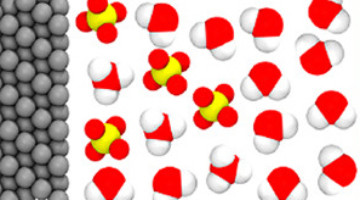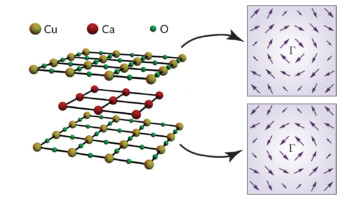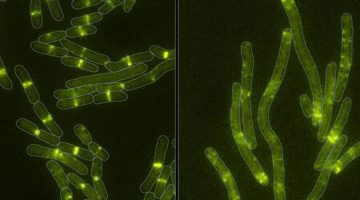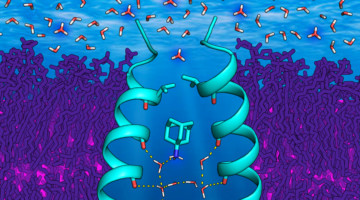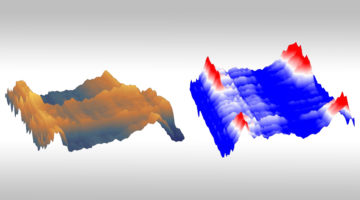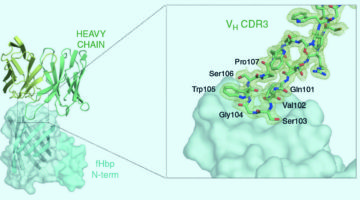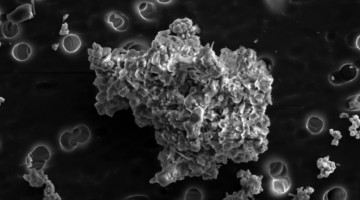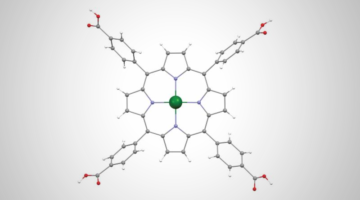Researchers identified the molecules that collect at the interface between a platinum electrode and an acidic electrolyte under an applied voltage. Knowledge of the structure and composition of such nanometer-thin interface regions is key to understanding topics such as corrosion, geochemistry, electrocatalysis, and energy storage. Read more »![]()
![]()
Science Highlights
Spin-Momentum Locking in Cuprate High-Temperature Superconductors
A form of spin-momentum locking, similar to the strong linkage between electron spin and momentum in topological insulators, has been found in a cuprate superconductor. The results open a new chapter in the mystery of high-temperature superconductors, suggesting that new, unexplored interactions and mechanisms might be at play. Read more »![]()
![]()
Electric-Field Switching of Topological Phase
Researchers have successfully switched a topological insulator on and off by applying an electrical field. The work represents a major advancement toward the creation of a functioning topological transistor that would allow devices to operate more efficiently at lower power than conventional electronics. Read more »![]()
![]()
A Two-Pronged Defense against Bacterial Self-Intoxication
Researchers solved the structure of a bacterial toxin bound to a neutralizing protein, revealing two distinct mechanisms for how the toxin-producing bacteria avoid poisoning themselves. The findings offer clues to the evolutionary origins of the potent toxins that enable bacterial pathogens to cause human diseases such as cholera and diphtheria. Read more »![]()
![]()
Toward a Blueprint for Anti-influenza Drugs
Researchers obtained high-resolution structures of several influenza antiviral drug molecules bound to their proton-channel targets in both open and closed conformations. The structures provide an atomic-level blueprint from which to design more effective anti-influenza drugs that can overcome growing drug resistance. Read more »![]()
![]()
The Smoking Gun of Soot Formation
Scientists identified a mechanism for the formation of soot involving a series rapid chemical reactions rather than the typical condensation of particles from gas. The results are critical to developing methods for controlling emissions responsible for millions of deaths annually, severe degradation of air quality, and enhanced global warming. Read more »![]()
![]()
Expanding the Infrared Nanospectroscopy Window
An innovative infrared-light probe with nanoscale spatial resolution has been expanded to cover previously inaccessible far-infrared wavelengths. The ability to investigate heterogeneous materials at nanometer scales and far-infrared energies will benefit a wide range of fields, from condensed matter physics to biology. Read more »![]()
![]()
Targeting Bacteria That Cause Meningitis and Sepsis
Researchers determined the structure of a human antibody that broadly protects against a bacterium that causes meningitis and sepsis. The work provides molecular-level information about how the antibody confers broad immunity against a variable target and suggests strategies for further improvement of available vaccines. Read more »![]()
![]()
Clues to the Solar System’s Original “Bricks and Mortar”
In comet dust, researchers discovered composite organic-inorganic mineral grains that are likely to be the original “bricks and mortar” of the solar system. “Forensic” samples preserved from the birth of the solar system allow investigations into the nature of the atomic and molecular ancestry of the terrestrial planets and life on Earth. Read more »![]()
![]()
A 2D Lattice of Molecular Qubits for Quantum Computing
Researchers developed a way to build a 2D lattice of molecular-spin qubits (quantum bits of information), with control over qubit orientation and localization. The work enables the integration of molecular quantum-information hardware into the scalable, robust, solid-state architectures needed for performing quantum computation. Read more »![]()
![]()
- « Previous Page
- 1
- …
- 13
- 14
- 15
- 16
- 17
- …
- 27
- Next Page »
